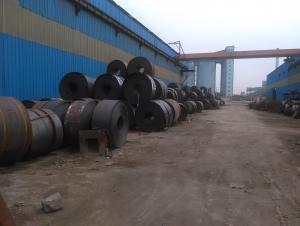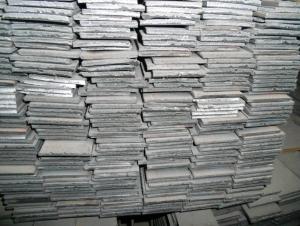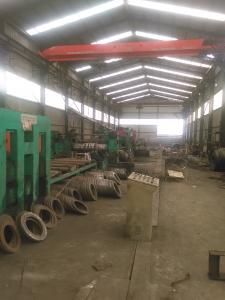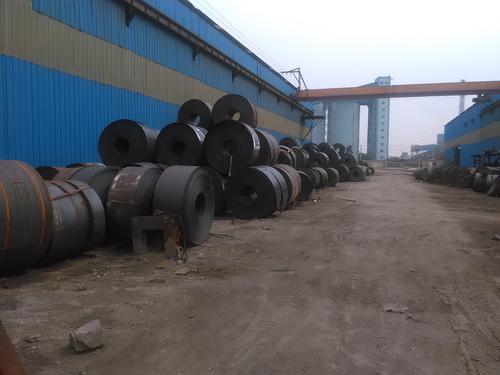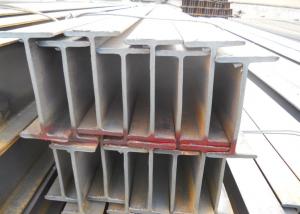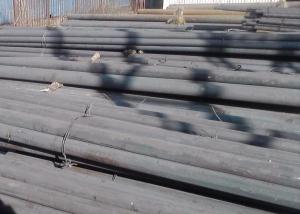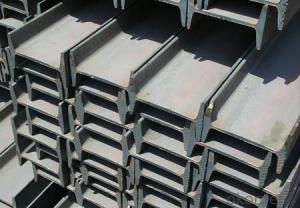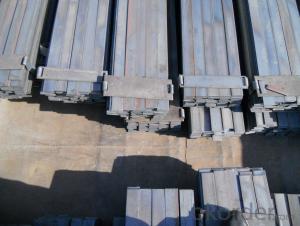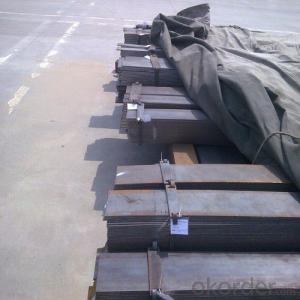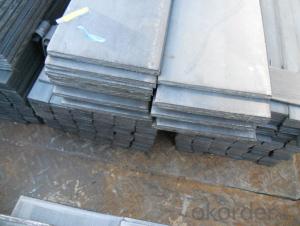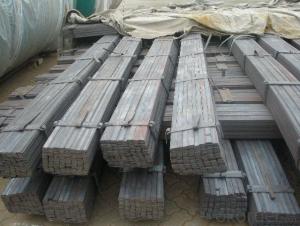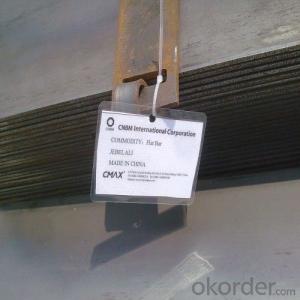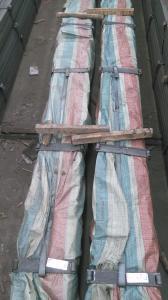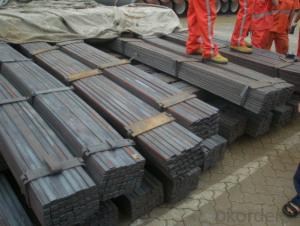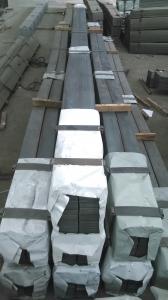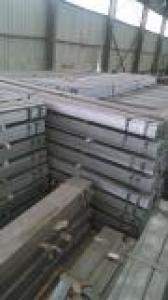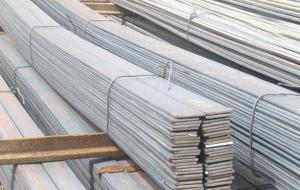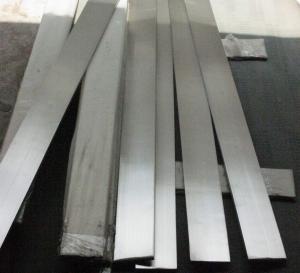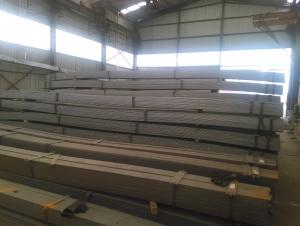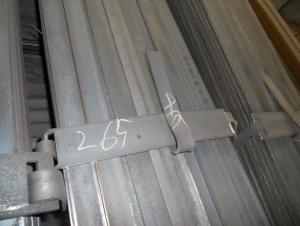Steel Flat Iron Grade GB Q235 Slitted by Cutting Machine
- Loading Port:
- Tianjin
- Payment Terms:
- TT or LC
- Min Order Qty:
- 50 m.t.
- Supply Capability:
- 10000T m.t./month
OKorder Service Pledge
OKorder Financial Service
You Might Also Like
Product Description:
OKorder is offering Steel Flat Iron Grade GB Q235 Slitted by Cutting Machine at great prices with worldwide shipping. Our supplier is a world-class manufacturer of steel, with our products utilized the world over. OKorder annually supplies products to African, South American and Asian markets. We provide quotations within 24 hours of receiving an inquiry and guarantee competitive prices.
Product Applications:
Steel Flat Iron Grade GB Q235 Slitted by Cutting Machine are ideal for structural applications and are widely used in the construction of buildings and bridges, and the manufacturing, petrochemical, and transportation industries.
Product Advantages:
OKorder's Steel Flat Iron Grade GB Q235 Slitted by Cutting Machine are durable, strong, and wide variety of sizes.
Main Product Features:
· Premium quality
· Prompt delivery & seaworthy packing (30 days after receiving deposit)
· Can be recycled and reused
· Mill test certification
· Professional Service
· Competitive pricing
Product Specifications:
Manufacture: slited
Slitting precision (width) : 0.5 mm or less
Raw material: Q235B, Q345B, Q235-1 b
crosscutting precision (length) : 2 mm or less
Processing: the thickness of 2.0-16 mm;
Shear length: 2000 mm above
Wide degree: 15-1250 - mm;
Leveling precision: 1-2 MM square
Packaging: Export packing, nude packing, bundled
Trademark | Rank | Chemical composition (quality score) % | |||||
C | Si | Mn | S | P | |||
≤ | ≤ | ≤ | |||||
Q235 | A | 0.14-0.22 | 0.30 | 0.30-0.65 | 0.050 | 0.045 | |
Q235 | B | 0.12-0.20 | 0.30 | 0.30-0.70 | 0.045 | 0.045 | |
Trademark | Rank | Pulling Test | |||||
Bend PointΔs/Mpa | Tensile Strength | Elongation Ratioδ5% | |||||
Thickness (Diameter) /MM | Thickness (Diameter) /MM | ||||||
≤16 | 16-40 | ≤16 | 16-40 | ||||
≥ | ≥ | ||||||
Q235 | A | 235 | 225 | 375-500 | 26 | 25 | |
Q235 | B | 235 | 225 | 375-500 | 26 | 25 | |
FAQ:
Q1: what is the difference between actual weight and theoretical weight?
A1: All the section steel has two weights: actual weight and theoretical weight. Actual weight is the weighing out when the product delivered from the mill. Theoretical weight is calculated by pieces. The invoice can be based on each of them as your request.
Q2: How do we guarantee the quality of our products?
A2: We have established an advanced quality management system which conducts strict quality tests at every step, from raw materials to the final product. At the same time, we provide extensive follow-up service assurances as required.
Q3: How soon can we receive the product after purchase?
A3: Within three days of placing an order, we will arrange production. The normal sizes with the normal grade can be produced within one month. The specific shipping date is dependent upon international and government factors, the delivery to international main port about 45-60days..
Images:
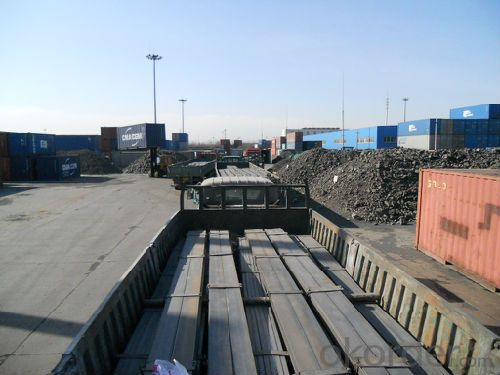
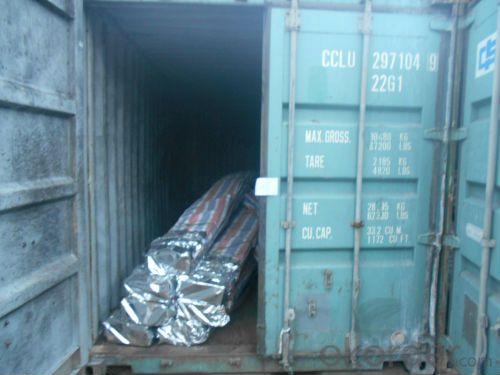
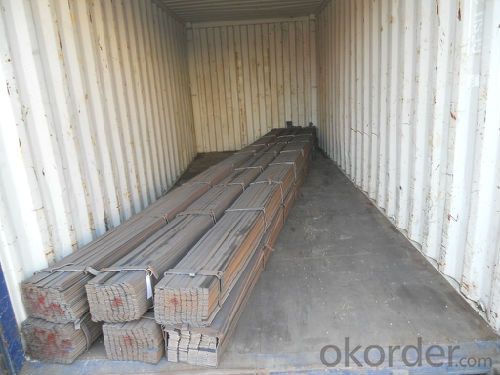
- Q: Can steel flat bars be used for making machinery parts or components?
- Indeed, machinery parts or components can be made using steel flat bars. Steel, a versatile and durable material widely utilized in the manufacturing industry, is commonly employed for machinery and equipment. The malleability of steel flat bars allows for easy shaping, cutting, and welding, enabling the creation of various machinery parts and components including brackets, frames, supports, and gears. The superior strength and rigidity of steel make it an excellent choice for machinery applications, capable of withstanding heavy loads, providing stability, and resisting wear and tear. Moreover, steel can be machined and treated to enhance its properties, for instance, through heat treatment or surface coatings, further augmenting its suitability for machinery parts and components.
- Q: How do steel flat bars contribute to the overall safety of structures?
- Steel flat bars contribute to the overall safety of structures by providing strength, durability, and stability. They are commonly used in construction to reinforce beams, columns, and other structural components, enhancing their load-bearing capacity and resistance to bending or warping. Steel flat bars also distribute the weight of a structure evenly, reducing the risk of structural failure or collapse. Additionally, their rigidity and resistance to corrosion make them reliable and long-lasting, ensuring the safety and stability of the overall structure for an extended period of time.
- Q: What is the typical shear strength of steel flat bars?
- The typical shear strength of steel flat bars can vary depending on the specific grade and thickness of the material. However, in general, steel flat bars have a shear strength ranging from 40,000 to 60,000 pounds per square inch (psi). It is important to note that these values may differ based on factors such as the heat treatment, composition, and manufacturing processes used for the steel flat bar.
- Q: Are steel flat bars suitable for high-traffic areas?
- Steel flat bars are well-suited for high-traffic areas given their durability and strength. They can endure heavy foot traffic and the constant movement of people without succumbing to damage or wear. These bars are impact-resistant and capable of bearing the weight and pressure exerted by individuals walking or running on them. Moreover, steel flat bars are frequently employed in industrial and commercial settings specifically due to their ability to withstand high traffic and heavy loads. Their robust construction and capacity to handle consistent use make them an excellent option for walkways, staircases, platforms, and other zones with substantial foot traffic.
- Q: Are steel flat bars commonly used in the transportation industry?
- Yes, steel flat bars are commonly used in the transportation industry. They are often used for constructing various components such as brackets, frames, and supports in vehicles like cars, trucks, and trailers. Steel flat bars are valued for their strength, durability, and versatility, making them a popular choice in transportation applications.
- Q: What are the different types of surface coatings for steel flat bars?
- Steel flat bars can be coated in various ways to enhance their properties and advantages. Here are some common options: 1. Zinc Galvanization: By applying a zinc layer, the steel flat bar gains protection against rust and corrosion. This makes it suitable for outdoor use or in high humidity areas. 2. Utilizing Powder Coating: Powder coating is a favored choice for steel flat bars due to its durability and attractive finish. It involves spraying dry powder onto the surface and then baking it to create a smooth and hard coating. 3. Opting for Epoxy Coating: Epoxy coatings are renowned for their exceptional adhesion and resistance to chemicals. They are commonly used in industrial settings where the flat bars are exposed to harsh conditions. 4. Applying Paint Coating: Paint coatings allow for customization in terms of color and finish. They provide a protective layer against corrosion and can be easily applied using spray or brush methods. 5. Chrome Plating: Chrome plating entails depositing a thin chromium layer onto the steel flat bar. This coating offers excellent durability and corrosion resistance, making it perfect for applications that require both strength and aesthetics. 6. Employing Black Oxide Coating: Black oxide coating chemically converts the surface of the steel flat bar, resulting in a black finish. It enhances appearance and offers mild corrosion resistance. These examples represent only a fraction of the available surface coatings for steel flat bars. The choice of coating depends on specific requirements such as corrosion resistance, aesthetics, and environmental factors. It is crucial to consider the intended use and conditions in order to select the most suitable coating for steel flat bars.
- Q: Between the MEB and the power distribution cabinet with wire with the flat and why
- Even if there is no condition to make the ring flat steel belt, the ground terminal box is usually reserved for the access pipe. If multiple power line is recommended to see 500 2.7. central area substation, but also set the MEB based, attracted special line, and the reinforced layer access line; flat steel (copper) can save you, ha ha
- Q: What industries commonly use steel flat bars?
- Steel flat bars are commonly used in a wide range of industries due to their versatile nature and durability. Some of the industries that commonly use steel flat bars include construction, manufacturing, automotive, infrastructure, and engineering. In the construction industry, steel flat bars are used for various purposes such as support beams, frames, braces, and structural components in buildings and bridges. They provide strength and stability to structures, making them ideal for withstanding heavy loads and pressure. Manufacturing industries also rely on steel flat bars for fabricating machinery, equipment, and tools. Due to their malleability, steel flat bars can be easily shaped and machined to meet specific requirements, making them suitable for various manufacturing processes. The automotive industry utilizes steel flat bars in the production of vehicles, especially in the chassis and body frames. Steel flat bars provide the necessary strength and rigidity to withstand the stresses and strains experienced by automobiles, ensuring safety and durability. Infrastructure projects such as highways, railways, and airports also extensively use steel flat bars. These bars are used in the construction of beams, columns, and other structural elements, providing the necessary strength to support heavy loads and withstand environmental conditions. Engineering industries also heavily rely on steel flat bars for a wide range of applications. These bars are commonly used in the fabrication of machinery, equipment, and components that require strength, resilience, and versatility. They are also used in the construction of support structures, frames, and braces required in various engineering projects. In summary, the industries that commonly use steel flat bars include construction, manufacturing, automotive, infrastructure, and engineering. Their versatility, strength, and durability make them indispensable in these industries for various applications and projects.
- Q: Are steel flat bars suitable for fabrication of machinery parts?
- Yes, steel flat bars are commonly used in the fabrication of machinery parts due to their strength, durability, and versatility. They provide a stable and rigid structure necessary for machinery components, making them a suitable choice for such applications.
- Q: Can roof strip be replaced with steel pipe instead of flat steel and round steel? Are there any examples of practical use?
- Steel pipes can be used instead of flat steel or round steel, and some of the structures on the buildings are connected and grounded by using steel pipe handrails on the walls of their daughters.
Send your message to us
Steel Flat Iron Grade GB Q235 Slitted by Cutting Machine
- Loading Port:
- Tianjin
- Payment Terms:
- TT or LC
- Min Order Qty:
- 50 m.t.
- Supply Capability:
- 10000T m.t./month
OKorder Service Pledge
OKorder Financial Service
Similar products
Hot products
Hot Searches
Related keywords
